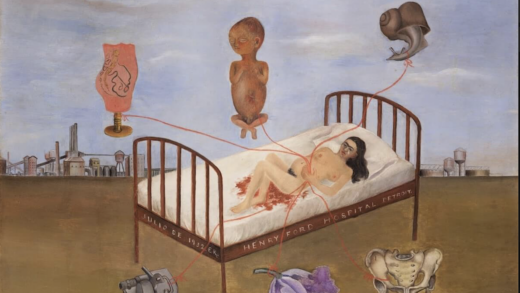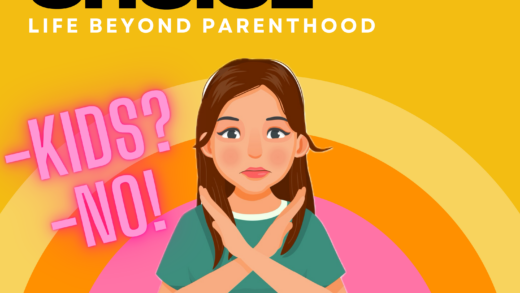Naomi De Lashmutt
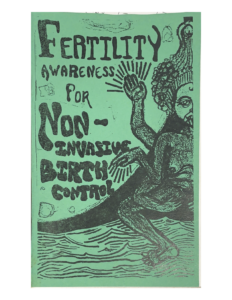
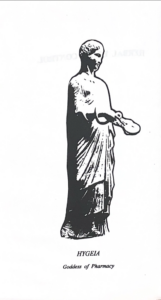
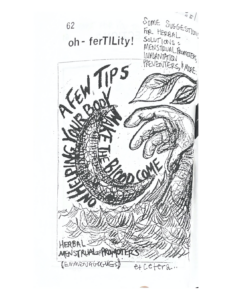
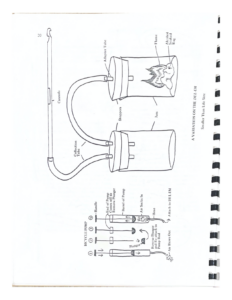
Alternative Birth Control: Past, Present, and Future
Recorded: 1st December 2022
Naomi De Lashmutt: What happens when abortions aren’t accessible? What happens in a future where birth control becomes harder to obtain?
These questions that, to some Americans, may have seemed dystopian and fully hypothetical a mere five years ago, are starting to become, or have become, reality.
On June 24th of 2022 the almost fifty year old legislation, Roe V. Wade, was overturned by the US Supreme Court, determining that states should have legal autonomy in their stance on abortion. This changed everything…
[Music Begins] Audionauti: “Beautiful Daughter”
I’m Naomi De Lashmutt, and in this brief podcast episode, I will be exploring the contexts for which alternative self-managed abortions and birth control have been necessary. As well as some of the methods that Americans have used in the last 50 years.
Roe V. Wade was decided in January of 1973, thereby legalizing induced abortion nationwide. According to research from the Guttmacher Institute, In the early world of Roe V. Wade, from 1973 to 1980 the rate of legal abortions was consistently around 1.6 million per year. As legal abortion rates inclined, the estimated number of illegal abortions and morbidity rate gradually decreased. In spite of Roe V. Wade’s positive impact on abortion accessibility, there was still a persisting need for affordable, and private methods for birth control.
In 1976 the Hyde amendment was introduced and passed by congress. As described on the Planned Parenthood website, Hyde prevented federal funds from being used in government insurance programs, such as Medicaid, for abortion services (with exceptions of incest, rape, or life-threatening risk). The legislation was created by an adamantly anti-abortion republican member of the House of Representatives as a step toward legally preventing abortion. Medicaid disproportionately serves Black, LatinX, and queer communities, and this policy perpetuates the discrimination of marginalized groups.
Particularly, for low income individuals, seeking abortions continued to be difficult, as well as highly stigmatized, during the Roe V. Wade era. This triggered a niche for information and resources that help individuals take their reproductive control into their own hands.
One method that was popularized in the 70s was “menstrual extraction,” a term coined by Carol Downer, a key player in the early 1970s women’s self-help movement. Menstrual extraction had been introduced pre-Roe, but has continued to be utilized until today. The technique involves using suction to empty the contents of the uterus. Suzann Gage’s manual, When Birth Control Fails: How to Abort Ourselves Safely, published in 1979, uses an abundance of clear, and anatomically correct images of the female reproductive system to walk individuals through the manual vacuum aspiration, or MVA, procedure, step by step.
The book not only provides instruction for how to perform the menstrual extraction process with help of another, it also provides instruction on how to perform the abortion on one’s own. The menstrual extraction kit can be fashioned using items that one will likely have at home, or be able to easily purchase for low cost. Consisting of jars with stoppers, syringes, and even bicycle pumps, these contraptions may not be the easiest to regulate, but are highly accessible.
Another common method of self-managed birth control is fertility awareness. With a focus on understanding one’s hormonal patterns, and tracking the aspects of one’s menstrual cycle, fertility awareness takes a non-invasive approach to birth control. The “zine” published by Arthouse Coalition in 2002 titled Fertility Awareness for Non-Invasive Birth Control uses a feminist lens to present information with the intention of empowering individuals to better understand their own bodies. It has a segment on learning how to examine one’s own cervix, tracking different aspects of a menstrual cycle, and a glossary breaking down different medical terminology, and offensive terminology in women’s health. The zine is covered in annotations using crude, yet accessible language, emphasizing that it is for YOU to take care of yourself [learn about yourself]. A final aspect of the Arthouse Coalition source is its section on herbal birth control. The section includes resources on different places to buy herbs, and educates using the “wise woman” tradition of holistic healing of the female body.
Herbal methods of birth control and medicine run deep in many different cultures, and have for thousands of years. In a 1993 Zine written by R. R. McGregor, herbal birth control is seen as a way of reaching the many young individuals who are reluctant to use birth control. They explain this reluctance as being due to men’s opinion of single women on birth control as being quote “bad,” “loose,” or “wanton.” While this Zene was distributed in a time when abortions were legal, the author makes the point that by concocting one’s own methods of birth control, one can have more agency over their reproductive choices. The seeds of plants like Queen Anne’s lace can be chewed daily or steeped in a glass of water, to reduce fertility. The leaves of Rue can be steeped in hot water to create a tea that induces miscarriage or prompts menstruation.
Today, of course the traditional methods of birth control such as herbal remedies and and fertility tracking continue to be used, as well the abortion option of MVA (or menstrual extraction). But there is a notable new option of medication. Abortion can be self-managed with the use of medications like Misoprostol, a common ulcer medication, and Mifepristone. As raised by Carrie Baker in a presentation on October 4th, 2022, a combination of these two medications has a 98% success rate, and is safer than taking Tylenol. In fact, research by the Guttmacher institute revealed that today, the majority of abortions are medication abortions.
With the overturning of Roe V. Wade came a wave of criticism of birth control as states push for restrictions on female bodies. An NBC News article by Aria Bendix assessed that forms of birth control such as plan B are easy targets for restrictions quote, “because they prevent implantation … in addition to fertilization. Some people already consider them abortion-inducing medications for that reason.” With birth control potentially being on the line, herbal remedies, and self managed abortions of different types may become further prevalent and vital. The methods with deep historical and cultural roots are crucial, as well as empowering.
It is easy to become discouraged with the tumultuous times we face, but there is hope! Planned Parenthood described that “In 2021 the Biden-Harris administration became the first administration in decades to exclude the Hyde Amendment from its presidential budget.” Steps are being made to make more inclusive policies regarding abortion access. There are still coalitions fighting to educate, empower, and inspire. AND there are people like Danish doctor, and activist, Rebecca Gomperts who are offering telemedicine abortion services and provision pills from across seas!
The first step to combatting this issue is awareness on the individual level. You’re helping just by giving me a listen! I hope you’ve learned a thing, or two! Check out my word press page for more information! Thank you for listening!
References- Alternative Birth Control: Past, Present, and Future
References
Arthouse Coalition. 2002? Fertility Awareness for Non-Invasive Birth Control. SSC-MS-00790, Box 1, Shelf 89-F-7, Women’s Health Specialists of California records, Sophia Smith Collection of Women’s History, Smith College Archives, Northampton, Massachusetts.
Baker, Carrie N. 2022. Abortion: Pre-Roe and Post-Roe. Smith College, Northampton, Massachusetts, United States. Powerpoint.
Bendix, Aria. 2022. “How will state abortion bans enacted after Roe v. Wade was overturned impact birth control?” NBC News. https://www.nbcnews.com/health/health-news/birth-control-restrictions-may-follow-abortion-bans-roe-rcna35289.
Cates, Willard, David A. Grimes, and Kenneth F. Schulz. 2003. “The Public Health Impact of Legal Abortion: 30 Years Later.” Guttmacher Institute. https://www.guttmacher.org/journals/psrh/2003/01/public-health-impact-legal-abortion-30-years-later.
Centers for Disease Control and Prevention. 1989. “Morbidity and Mortality Weekly Report: Abortion Surveillance, United States, 1984-1985.” CDC. https://www.cdc.gov/mmwr/preview/mmwrhtml/00001467.htm.
Gage, Suzann. 1979. When Birth Control Fails: How to Abort Ourselves Safely. SSC-MS-00790, Box 1, Shelf 89-F-7, Women’s Health Specialists of California records, Sophia Smith Collection of Women’s History, Smith College Archives, Northampton, Massachusetts.
McGregor, R. R. 1993. Herbal Birth Control: A Brief History With Ancient and Modern Herbal Recipes. SSC-MS-00790, Box 1, Shelf 89-F-7, Women’s Health Specialists of California records, Sophia Smith Collection of Women’s History, Smith College Archives, Northampton, Massachusetts.
Nancy Ford J.D. (1983) The evolution of a constitutional right to an abortion Fashioned in the 1970s and secured in the 1980s, Journal of Legal Medicine, 4:3, 271-322, DOI: 10.1080/01947648309513386
N.d. “Beautiful Daughter.” Free Production Music by Jason Shaw AudionautiX.com. Accessed December 4, 2022. https://audionautix.com/.
Planned Parenthood. 2021. “Losing Paradise.” Historical Abortion Law Timeline: 1850 to Today. http://n.org/issues/abortion/abortion-central-history-reproductive-health-care-america/historical-abortion-law-timeline-1850-today.
